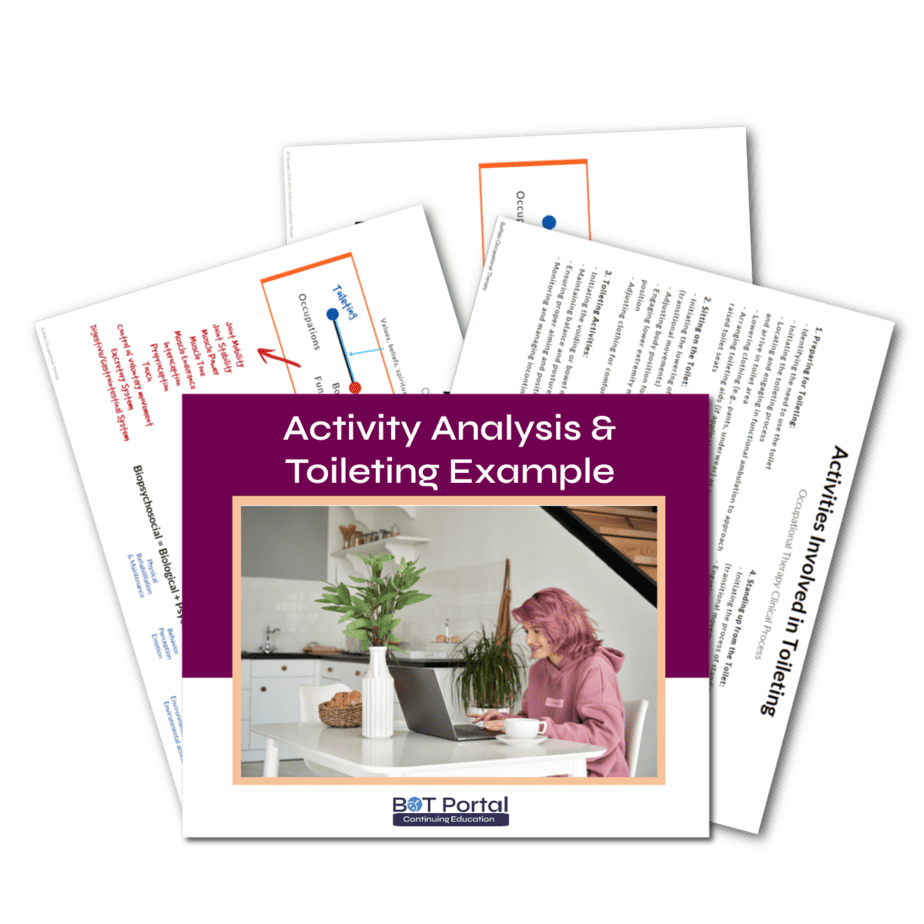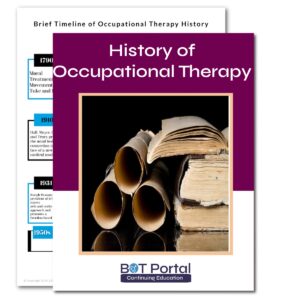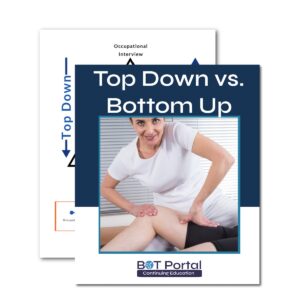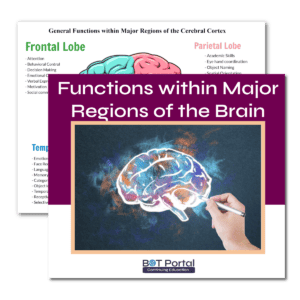Description
Activity Analysis Occupational Therapy Example of Toileting
Breakdown and illustration of activity analysis for occupational therapy activity A
***Color-Coded Activity Analysis Copyrighted and Trademarked by Buffalo Occupational Therapy***
Download Activity Analysis Occupational Therapy Example of Toileting with a breakdown and illustration of activity analysis for occupational therapy to help your clients make sense of the occupational therapy mindset! It is hard to conceptualize a concept that is unique to one profession, so show them! Show them the power of a continuum.
Activity Analysis Occupational Therapy Example
Take your treatment planning and patient education to the next level by using this colorful tool to explain your profession
Activity Analysis Occupational Therapy Example of Toileting
Activity Analysis Occupational Therapy Exampl
Body Functions:
- Sensory functions: Assess sensory perception related to bladder and bowel sensation, as well as any sensory impairments affecting toileting independence.
- Neuromusculoskeletal functions: Evaluate muscle strength, range of motion, and coordination needed for positioning, transferring, and performing toileting tasks.
- Cognitive functions: Assess cognitive abilities such as memory, attention, and executive functions required for planning, sequencing, and executing toileting steps.
- Psychosocial functions: Address emotional factors such as anxiety, embarrassment, or depression that may impact toileting independence and confidence.
Body Structures:
- Evaluate physical structures such as the musculoskeletal system, including joints, muscles, and bones, which are essential for mobility, positioning, and stability during toileting tasks.
- Assess any structural impairments, such as limitations in range of motion, contractures, or deformities, that may affect toileting performance and safety.
Performance Skills:
- Motor skills: Analyze motor control, coordination, and endurance required for activities such as transferring to and from the toilet, managing clothing, and performing hygiene tasks.
- Sensory-perceptual skills: Consider sensory processing abilities related to body awareness, tactile sensitivity, and spatial perception during toileting tasks.
- Cognitive-perceptual skills: Evaluate cognitive abilities such as attention, memory, problem-solving, and sequencing needed for planning and executing toileting routines.
- Emotional regulation skills: Address emotional factors that may affect toileting performance, such as anxiety, frustration, or embarrassment, and develop coping strategies to enhance confidence and independence.
Activity:
- Break down the toileting activity into specific tasks, including transferring to and from the toilet, managing clothing (e.g., lowering pants, fastening buttons), maintaining balance and stability while seated, performing hygiene tasks, and handwashing.
- Identify any barriers or challenges faced by the individual during toileting, such as environmental obstacles, equipment limitations, or cognitive impairments.
- Develop individualized strategies and adaptations to address identified deficits and promote independence and safety in toileting activities.
What is included?
- 2 page of toileting activity breakdown through activity analysis
- 1 original activity analysis PDF
Other helpful links:
Check out BOT Portal: Resource Site for Occupational Therapy Students and Practitioners
How to Write a Toileting Goal for Occupational Therapy Practitioners




